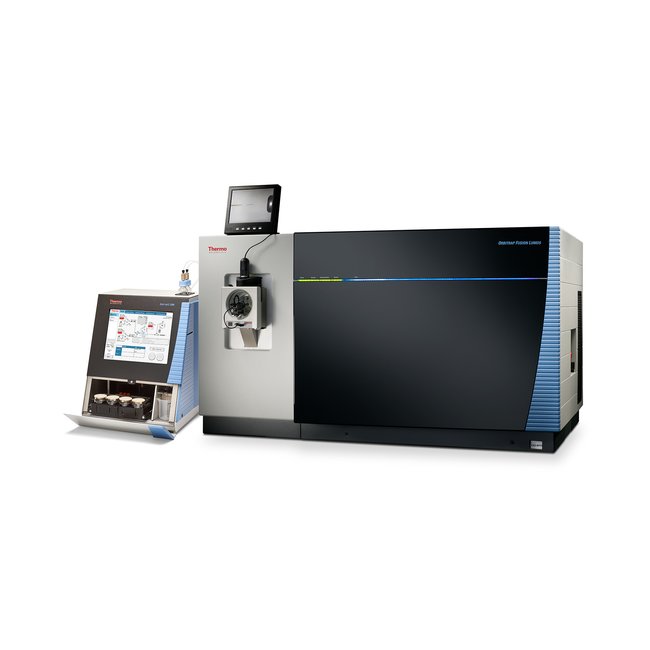Scientists facing highly complex characterization challenges can now gain a deeper understanding of their samples with new enhancements to the industry-leading Thermo Scientific Orbitrap Fusion Lumos Tribrid mass spectrometer that extend its power, performance and versatility.
 “When we launched the Orbitrap Fusion Lumos Tribrid mass spectrometer in 2015, we redefined protein and small molecule quantitation and characterization, and now, we pushed these limits even further,” said Ken Miller, vice president, omics marketing, chromatography and mass spectrometry, Thermo Fisher. “The ability to intelligently select the most promising precursor ions, create new sequence- or structure-informative fragments, and characterize them to the level of fine isotope structure is a constellation of new capabilities that make the Fusion Lumos mass spectrometer essential for the most advanced proteomics, metabolomics and small molecule research discoveries.”
“When we launched the Orbitrap Fusion Lumos Tribrid mass spectrometer in 2015, we redefined protein and small molecule quantitation and characterization, and now, we pushed these limits even further,” said Ken Miller, vice president, omics marketing, chromatography and mass spectrometry, Thermo Fisher. “The ability to intelligently select the most promising precursor ions, create new sequence- or structure-informative fragments, and characterize them to the level of fine isotope structure is a constellation of new capabilities that make the Fusion Lumos mass spectrometer essential for the most advanced proteomics, metabolomics and small molecule research discoveries.”
The Orbitrap Fusion Lumos instrument brings an unprecedented level of structural information for improved identification and characterization to scientists performing top down proteomics, small molecule characterization, lipidomics and biopharma research. New enhancements include:
- Integrated Ultraviolet Photodissociation (UVPD) that allows researchers to perform large and small molecule structure determination on an LC time scale. Now an optional feature on Orbitrap Fusion Lumos systems, this unique fragmentation mode is designed to improve sequence coverage and antibody characterization, decreases scrambling in top-down hydrogen deuterium exchange (HDX) experiments and created to be a complete solution for structural characterization of lipids and other metabolites. This provides researchers with more complete structural information to solve their complex structure assignment challenges. The enhancement is supported by the new Thermo Scientific Xcalibur 4.1 software, an easy-to-use, flexible and efficient solution that is intended to enable simple method setup, data acquisition, processing and reporting through an intuitive interface.
- New Advanced Peak Determination (APD) algorithm that is designed to improve performance of most proteomic workflows with high peptide and protein identification rates in data-dependent experiments.
- 1M resolution, which is now available for researchers who need ultra-high resolution to confidently measure fine isotope structures or separate isobaric compounds. This new option, used to obtain unique structural and quantitative information for a wide range of compound classes, aids scientists in proteomics, pharmaceutical, metabolomics, fluxomics and industrial chemical applications.




